I went behind the scenes at HP and its Spectre Fold is a stunning foldable laptop
Better designed than Asus and Lenovo's equivalent products, HP's foldable laptop is a thing of wonder – and great expense
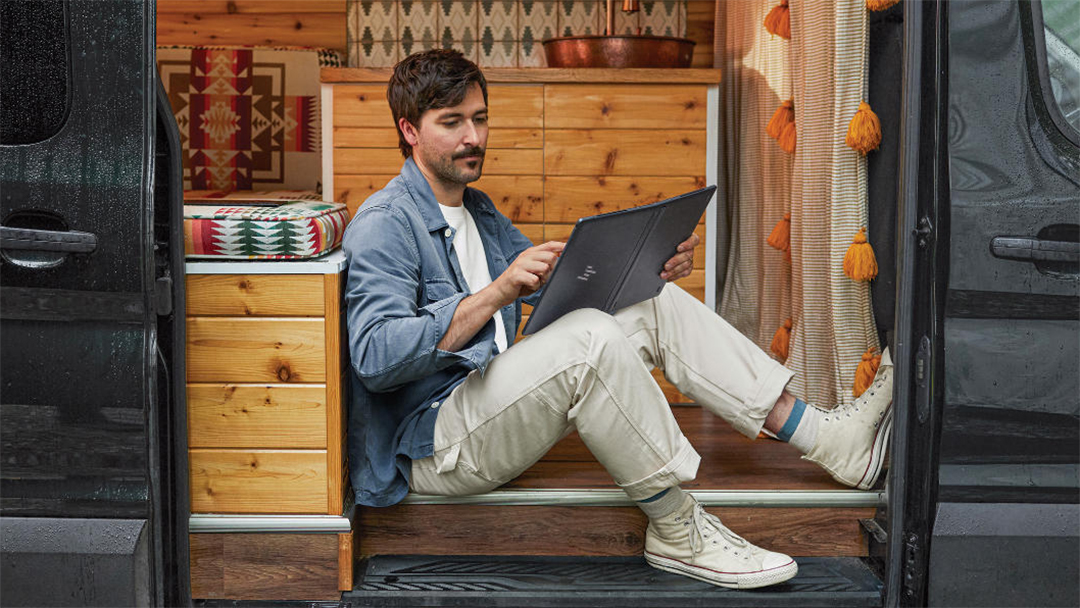
It was back in September that Hewlett-Packard revealed its take on the folding laptop: the HP Spectre Fold. This '3-in-1' device – designed to function as a tablet, notebook laptop and desktop-replacement all rolled into one – immediately stood apart from its Lenovo ThinkPad X1 Fold and Asus Zenbook 17 Fold OLED competitors for being thinner, lighter and simply better designed.
Fast-forward three weeks and I spent the day at HP's headquarters in Palo Alto, California, to take a deeper dive into the Spectre Fold, meet the product's designers, and go hands-on with the device to explore all its forms. And I've got to say: this product is a thing of wonder that hints at the future of mobile computing.
I say hints at because the Spectre Fold is also a thing of great expense – with a $/£4999 asking price. Yup, this almost-five-grand masterpiece is a melting pot of new design and innovations that, much like unobtainable-for-most premium sportscars, represents the top tier of what's possible right now. So you can buy one, not that many people will – but that's not really the point.
The point is to push the boundaries and show off; the Spectre Fold is HP's peacock feather display of a hybrid; it's the cumulation of design that's more precise, more considered, and more costly overall. It comes with a wirelessly-charging stylus and integrated magnetically-attaching keyboard; there's also an integrated kickstand on the rear so the screen can be propped up to a 'perfect' 120-degree angle.
Stacy Wolff, HP's Global Head of Design Personal Systems Consumer Solutions, tells me: "We [HP] wanted to make sure this product was very chameleon-like. It gives the artist a huge canvas [in tablet mode]; the laptop has the keyboard sitting there so cleanly; but when you detach that for the all-in-one mode you really feel like you’re in front of a desktop. Its design was all about delivering on removing points of friction."
When flat the Spectre Fold measures just 8.5mm, which is akin to the best tablets you can buy, no bulkier. The OLED panel folds with ease, yet there's ample stiffness in the hinge, and I'm surprised how well the crease – a common issue for the best folding phones too – is largely mitigated to make for smooth stylus or finger contact on the touch-panel.
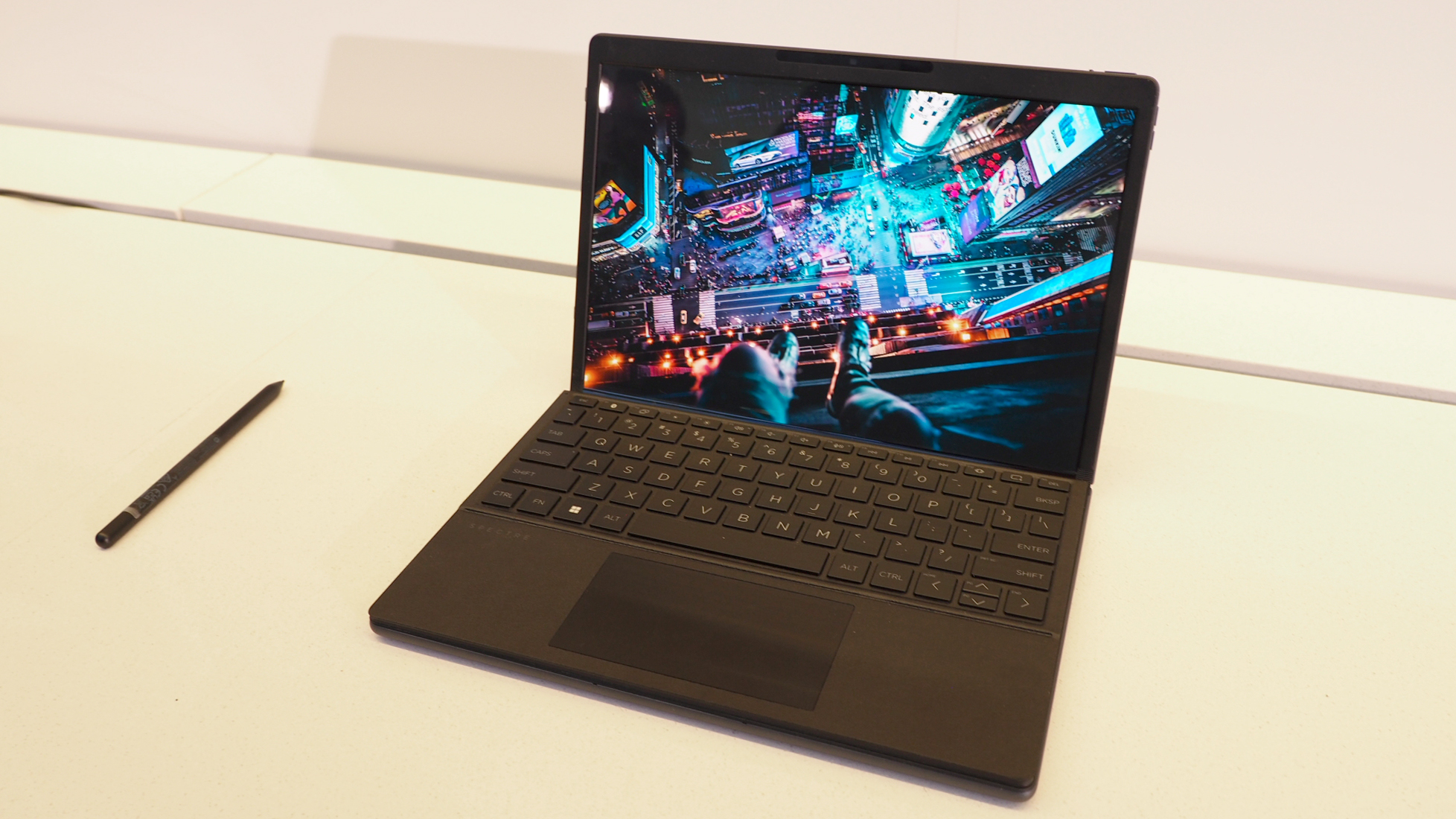
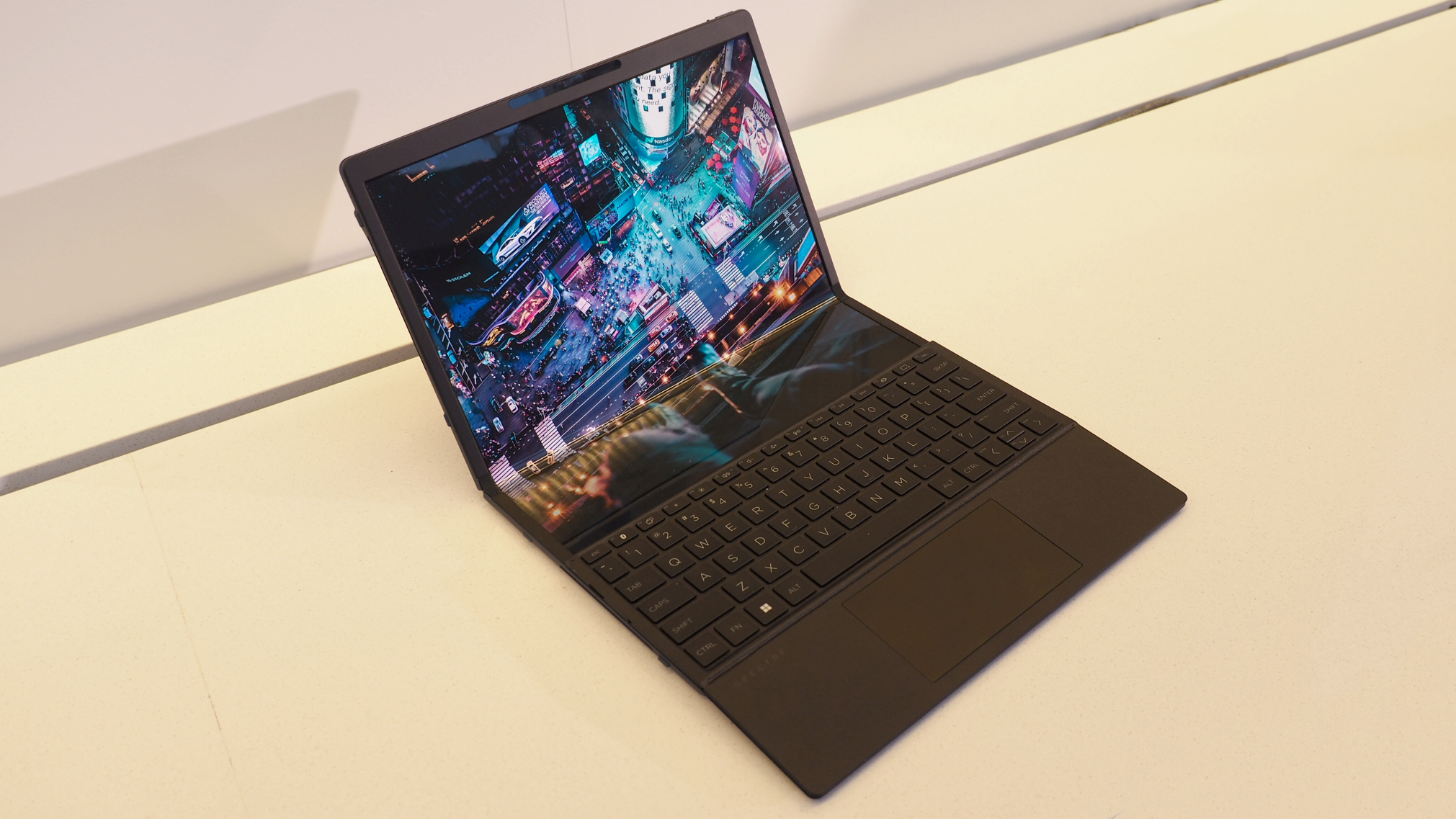
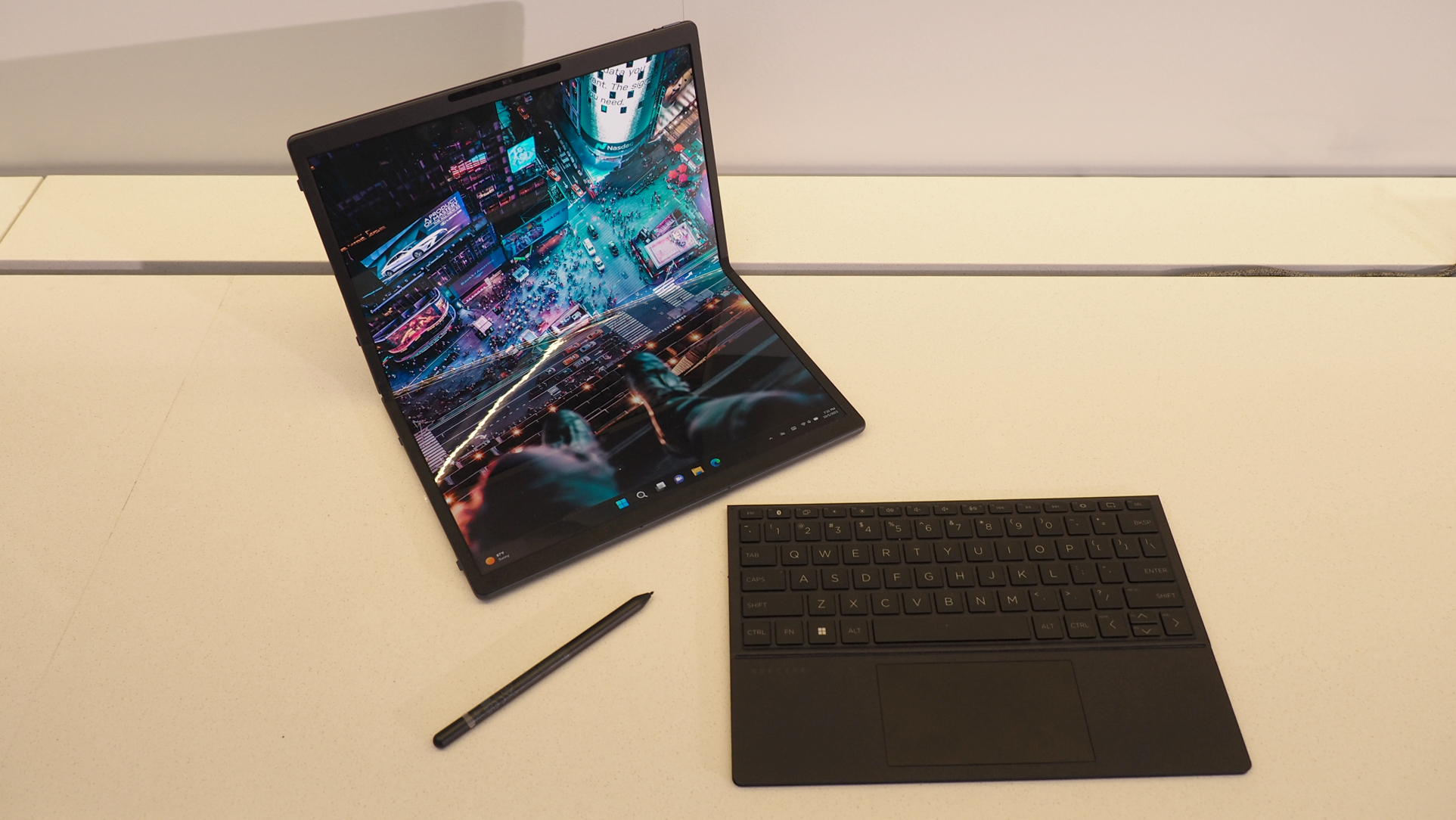
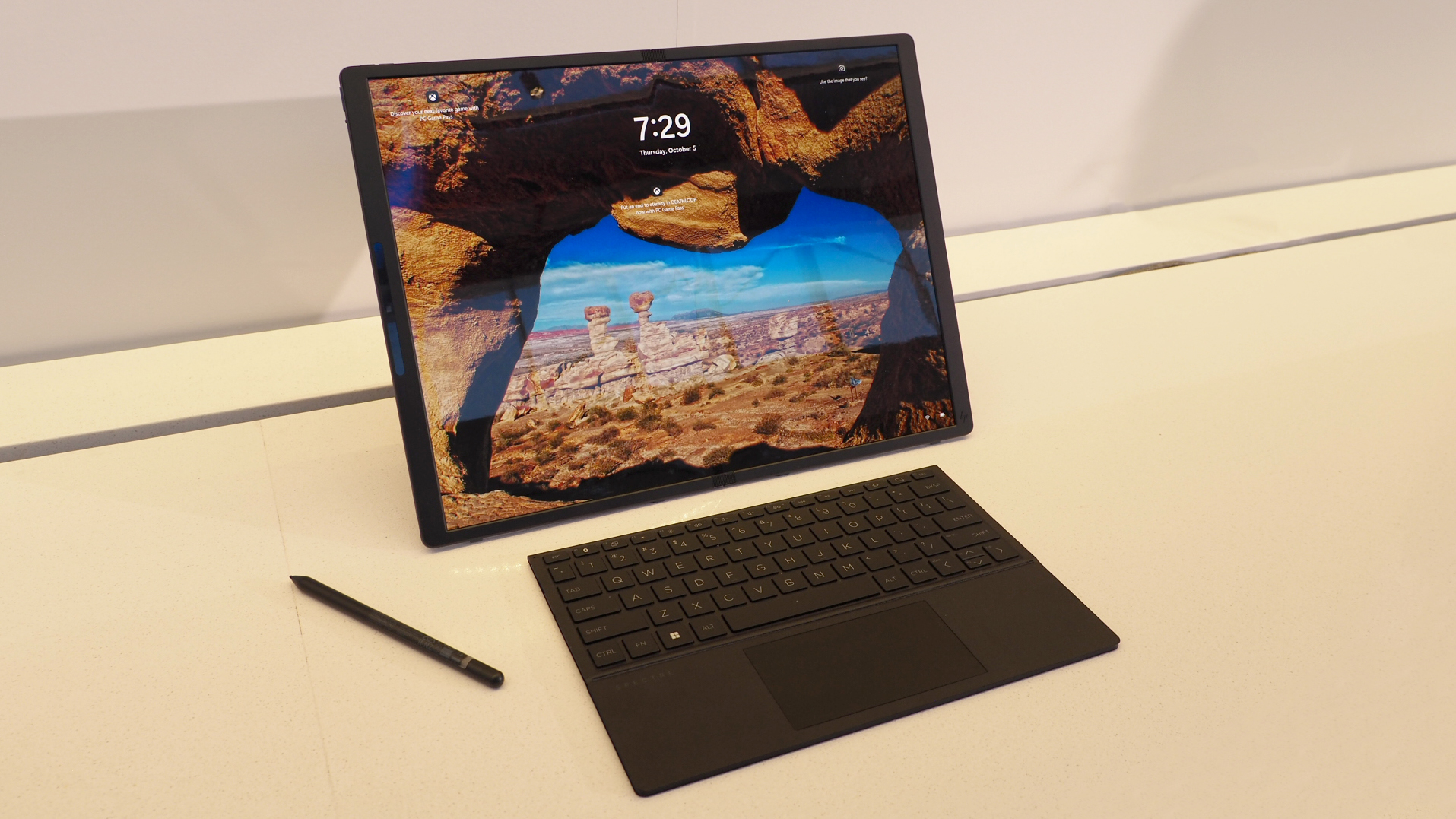
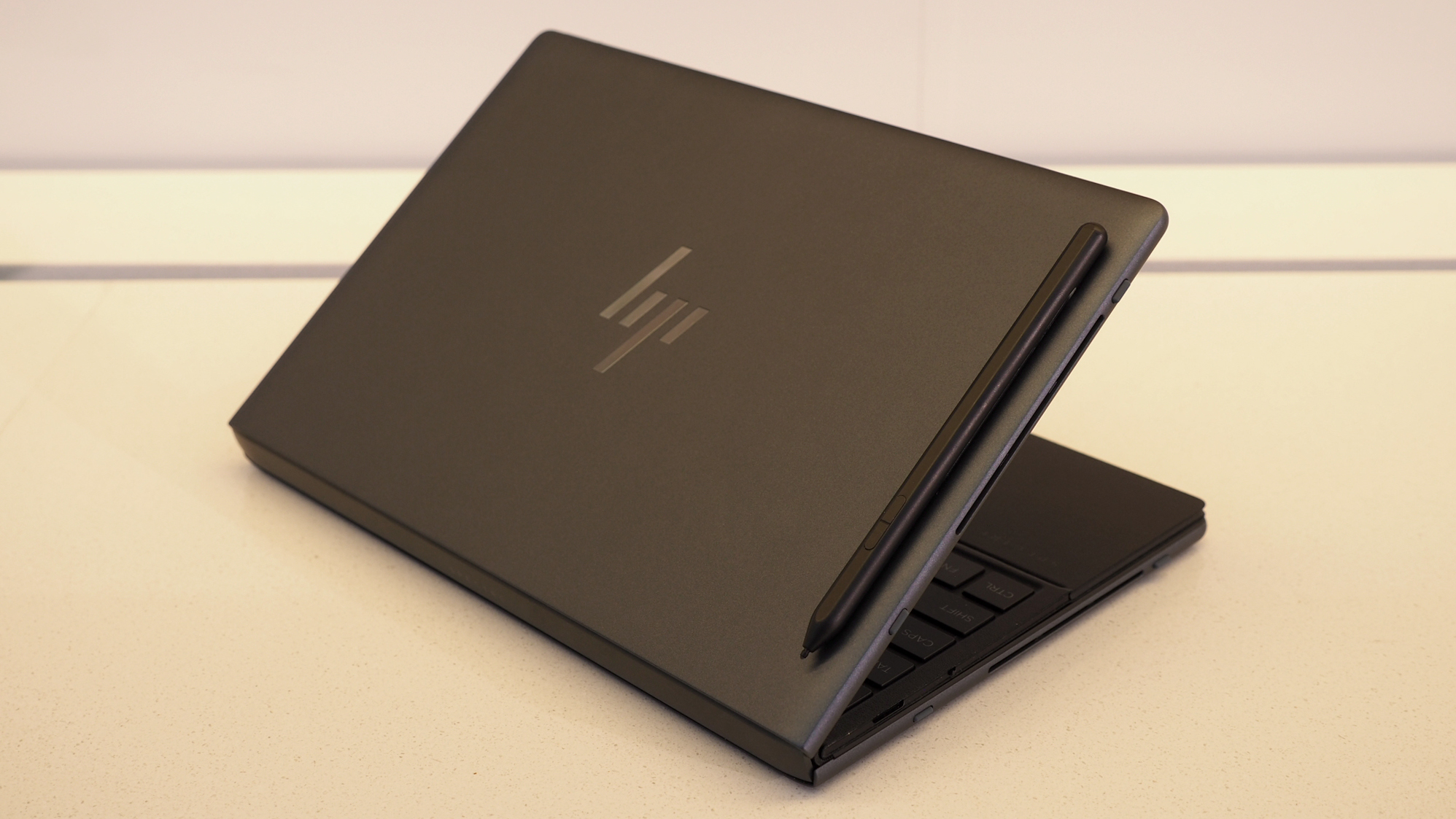
Jo Tan, HP's SVP & Division President Personal Systems Consumer Solutions, tells me: "The fold radius is just 3mm; the tightener the radius the more smooth the surface is on the screen. There’s a metal plate to protect it too, so it doesn’t have that 'bouncy' feeling," as she demonstrates how the rear spine of the folded laptop-form disappears into the unfolded tablet-form device, its metal backing ensuring a flat and solid screen. "These are the little details that we care about."
Get all the latest news, reviews, deals and buying guides on gorgeous tech, home and active products from the T3 experts
Such little (yet all-important) details should also help you achieve your best work. The keyboard, which magnetically clips onto the lower section of the Fold's screen to form a laptop, can also be pulled down to reveal an additional half of the lower portion of the display, for example, creating a 14-inch hybrid. In this expanded mode HP Snap Windows (an adapted version of Snap, a standard Windows 11 feature) means you gain an additional section of screen real-estate for extra functionality.
The first time I handle the Spectre Fold all I seemed to do was prod, pull and adjust it for the sheer satisfaction – not because I was trying to break it, simply because it's actually fun to do so. These are my favourite moments in tech: when I get to see the fruits of companies' passions and labour and react with childlike wonder. They're rare moments too, because so often products are just 'yet another' of the established norm. The Spectre Fold is anything but.

Mike is T3's Tech Editor. He's been writing about consumer technology for 15 years and his beat covers phones – of which he's seen hundreds of handsets over the years – laptops, gaming, TV & audio, and more. There's little consumer tech he's not had a hand at trying, and with extensive commissioning and editing experience, he knows the industry inside out. As the former Reviews Editor at Pocket-lint for 10 years where he furthered his knowledge and expertise, whilst writing about literally thousands of products, he's also provided work for publications such as Wired, The Guardian, Metro, and more.
